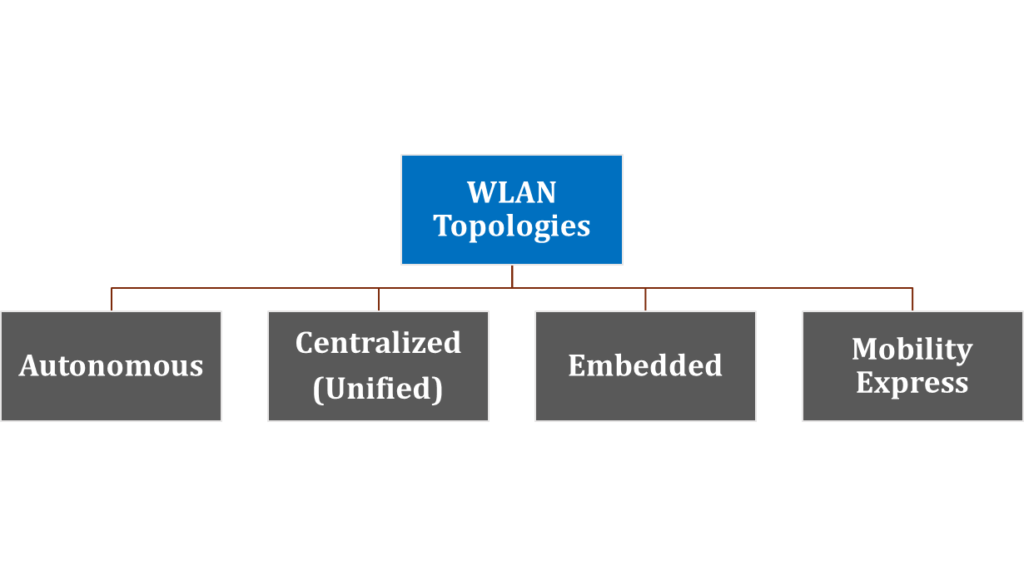
WLAN and WiFi Infrastructure refers to concepts like LAN topologies, pairing lightweight APs and WLCs, and finally, leveraging antennas for wireless coverage. It is very important to understand these concepts for computer networking & certifications like Cisco CCNA, CCNP, CCIE, CompTIA Network+, Huawei HCNA & Cybersecurity.
Wireless Infrastructure WLAN Topologies
This concept explains autonomous, cloud-based centralized, embedded, and mobility wireless architectures.

Autonomous Topology
Autonomous access points (APs) are self-contained and offer one or more standalone basic service sets (BSSs). They are an extension of a switched network, connecting wireless service set identifiers (SSIDs) to wired VLANs at the access layer.
An autonomous access point (AP) needs to be configured along with a management IP address and management VLAN to enable remote management of the access point (AP).
Below shows autonomous APs presenting two wireless LANs with SSIDs wlan100 and wlan200 to the wireless users. Traffic is also forwarded by APs between the wireless LANs and two wired 100 and 200
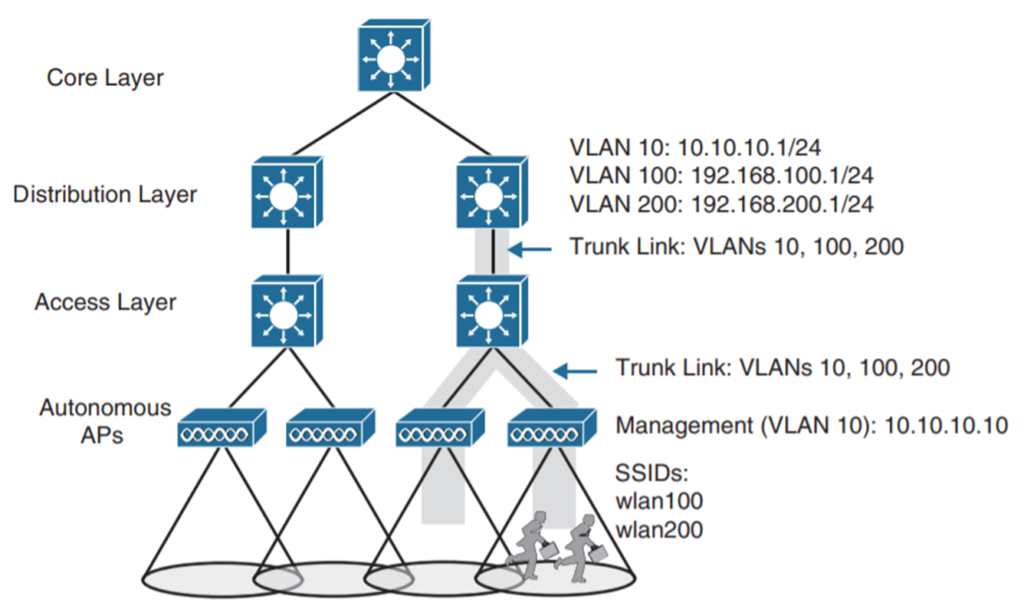
Centralized (unified) WLC (WLAN Controller)
A unified WLAN controller designed for a large business or enterprise can support up to 6000 access points (APs). Layer 3 (Network layer) boundary for every data VLAN is managed near or at the WLAN controller, hence the VLANs need to reside at that location, shown by the shaded link
Every access point has its own special management IP address, but it connects to an access layer switch through an access link instead of a trunk link. Since all the access points are joined to a single WLAN controller, the WLAN controller can efficiently manage the user’s connectivity to every other area of the network
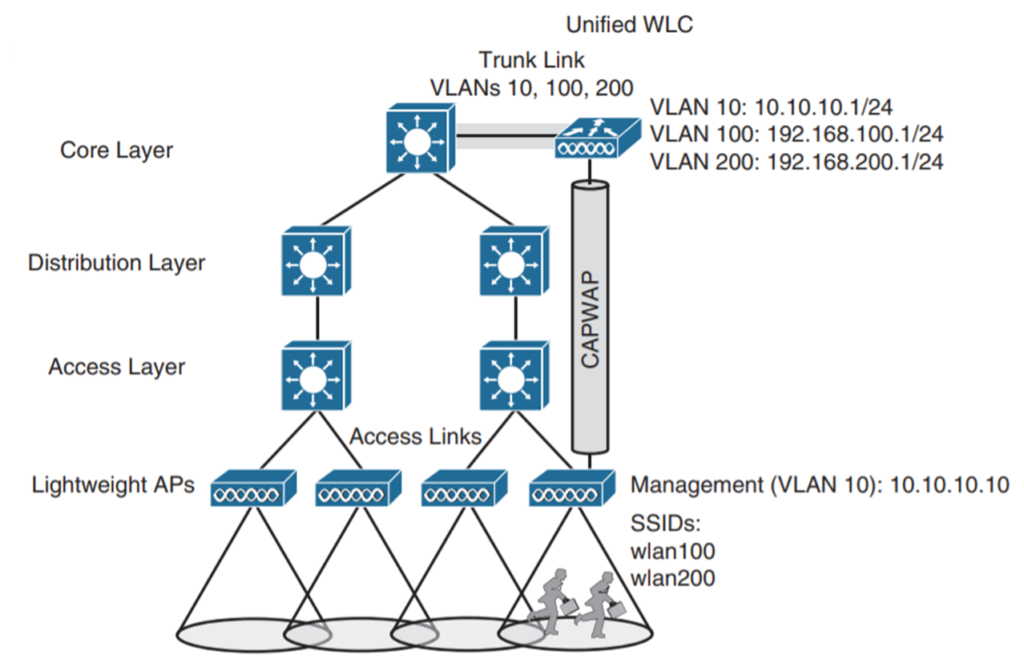
Embedded Wireless Network Topology
A WLAN controller can be found far down in the network hierarchy. In the diagram below, the WLAN controller is grouped with the access layer switch. This is referred to as an embedded wireless network topology because the WLAN controller is embedded or enclosed in the switch hardware
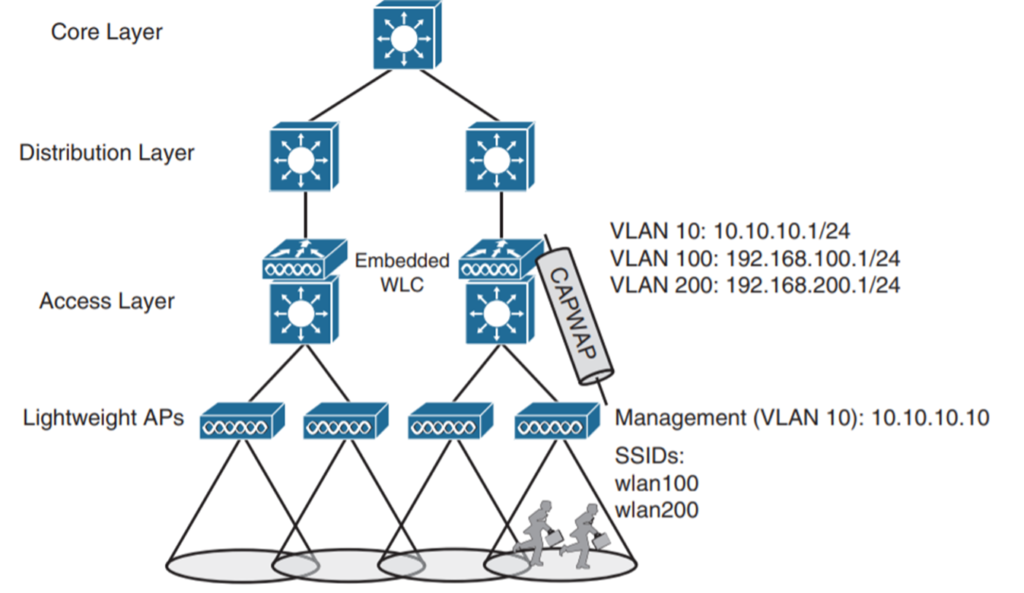
Mobility Express Topology
The WLAN controller can be moved below the access layer and into an access point. The diagram demonstrates the mobility express topology, where a functioning Cisco access point runs software that serves as a WLAN controller. This type of topology can be valuable in small scale enterprise
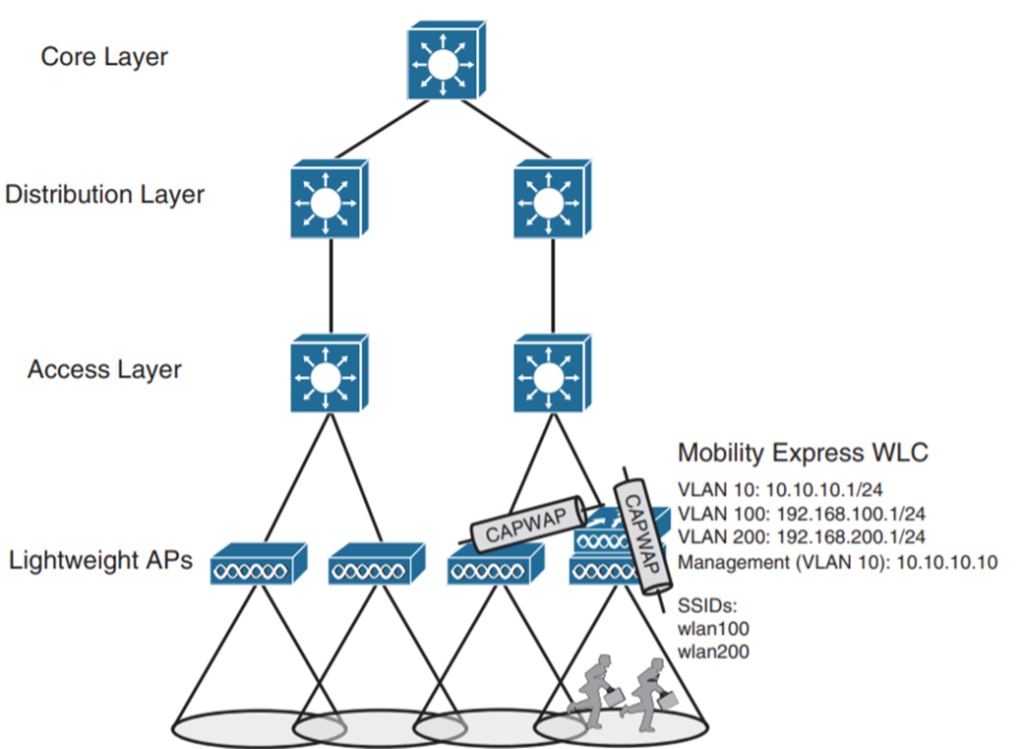
Pairing Lightweight APs and WLC
Cisco lightweight wireless access points need to be paired with a WLAN controller to work or function. Before a wireless client can be supported, every access point (AP) should find and bind itself with a controller
Below is a state machine of a lightweight access point:
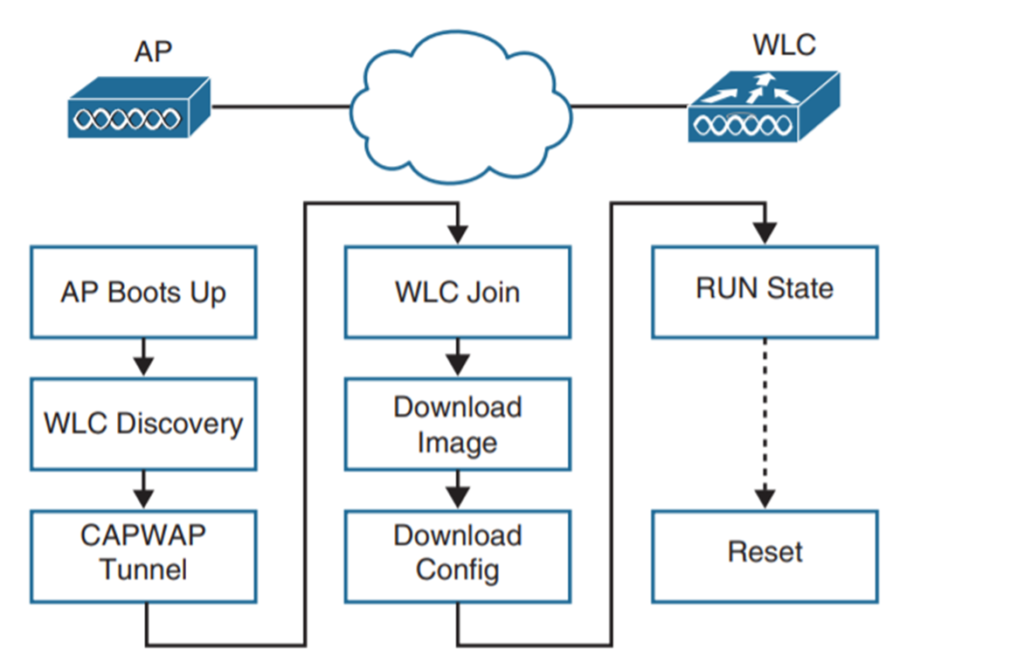
Wireless Infrastructure Cisco AP Modes
The following are modes in which lightweight AP (access point) can be configured: Local, Monitor, Sniffer, Flex-Connect, Bridge, Flex-Bridge, Flex+Bridge, Rogue detector, SE-Connect
Leveraging Antennas for Wireless Coverage
Every antenna has a gain value and an intended goal, they come in different shapes and sizes. Ideally, an isotropic antenna does not really exist, and it is impractical to construct. Omnidirectional antennas usually tend to transmit a signal evenly in every direction from the cylinder, and not along the length of the cylinder. A directional antenna focuses the RF energy in one general direction since they have a higher gain than the omnidirectional. Yagi antennas produce a more focussed egg-shaped pattern that extends across the antenna’s length
Below, we have antenna types radiation pattern

Wireless Infrastructure Important Concept
One important concept of wireless infrastructure is polarization. Polarization is the electrical wave’s orientation. An antenna or receiver that produces a cycle is vertically polarized, while those that produce a horizontal cycle or oscillation are horizontally polarized. Antenna polarization at the transmitter should be compatible with the polarization at the receiver.
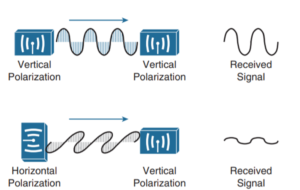
-End-
Signals and Modulation of WiFi / Wireless
Wireless WiFi Roaming
You might also be interested in our free Online Quizzes on all IT topics including Cisco CCNA, Cyber Security, Python Programming, Linux & Ethical Hacking:
Free Online Quizzes (Best for Cisco CCNA, Huawei HCNA, N+)
You can also view free study notes (Cheat sheets) for long term memory:
Networkwalks Summary Cheatsheets
 WLAN and WiFi Infrastructure refers to concepts like LAN topologies, pairing lightweight APs and WLCs, and finally, leveraging antennas for wireless coverage. It is very important to understand these concepts for computer networking & certifications like Cisco CCNA, CCNP, CCIE, CompTIA Network+, Huawei HCNA & Cybersecurity.
WLAN and WiFi Infrastructure refers to concepts like LAN topologies, pairing lightweight APs and WLCs, and finally, leveraging antennas for wireless coverage. It is very important to understand these concepts for computer networking & certifications like Cisco CCNA, CCNP, CCIE, CompTIA Network+, Huawei HCNA & Cybersecurity.








